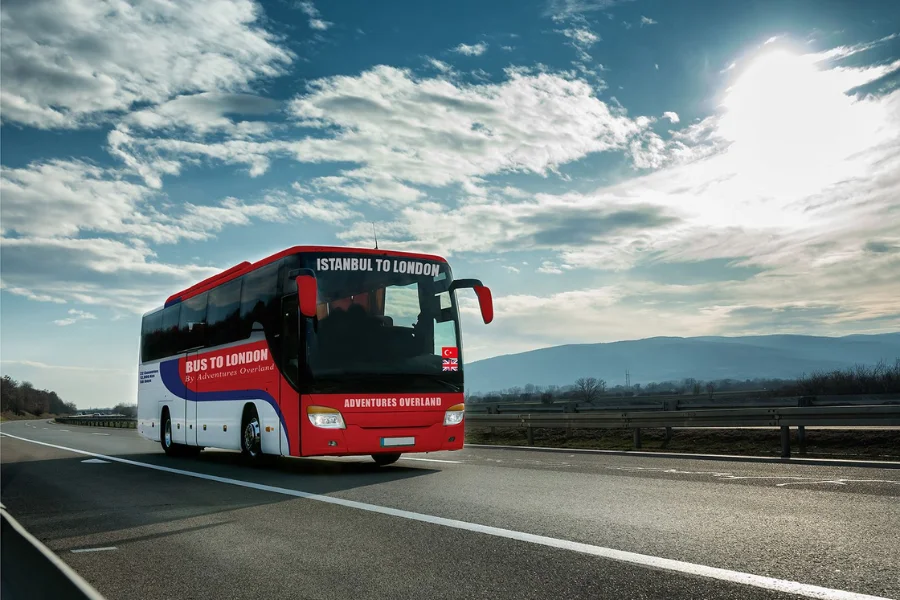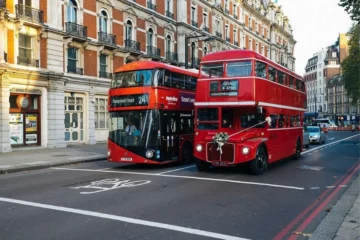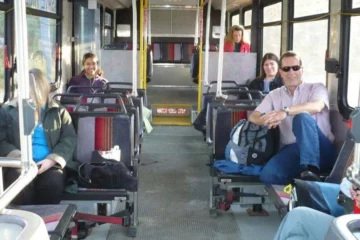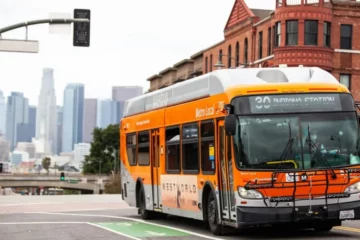From Vintage to High-Tech: A Fascinating Look at the Evolution of Bus Travel

Bus Travel | Bebevy
The Early Days of Bus Travel – Horse-Drawn Carriages to Steam Engines
The history of bus travel can be traced back to the early 1820s in England when horse-drawn buses were first introduced. These early buses were essentially stagecoaches that had been modified to carry more passengers. They were a common sight in major cities and towns and were used to transport people short distances within urban areas.
As the Industrial Revolution swept across Europe and America in the mid-19th century, steam engines began to replace horses as the primary mode of transport. The first steam-powered buses were introduced in the 1830s and were capable of carrying large numbers of passengers over long distances. These steam buses were noisy, dirty, and uncomfortable, but they were a significant improvement over horse-drawn carriages.
In the early 20th century, gasoline-powered engines began to replace steam engines, and the modern motor coach was born. These early motor coaches were more fuel-efficient, faster, and more comfortable than their predecessors. They quickly became popular for intercity travel, and bus companies began to spring up all over the world.
The Rise of the Motor Coach and Intercity Bus Travel
By the 1920s, bus travel had become a popular and affordable way to travel long distances. The introduction of the Federal Highway Act in the United States in 1921 paved the way for a nationwide highway system, which made bus travel even more accessible. The Greyhound company was one of the first to take advantage of this new infrastructure, and by the 1930s, they had become the largest bus company in the world.
During this period, buses underwent significant changes to make them more comfortable for passengers. Air conditioning, reclining seats, and restrooms became standard features on long-distance buses. This made bus travel a viable alternative to train travel, which had previously been the most popular way to travel long distances.
Bus Travel in the Mid-20th Century – Luxury Coaches and the Greyhound Era
The post-World War II era saw bus travel undergo a significant transformation, with new technologies and innovations paving the way for a more comfortable and efficient form of transportation. Luxury coaches became more common, with companies like Greyhound and Trailways offering amenities like on-board televisions, air conditioning, and comfortable reclining seats.
During this period, buses also became a popular way to travel for tourists. Sightseeing buses became common in major cities, offering tourists a convenient way to see the sights without having to navigate the city on their own. Buses also became a popular way to travel to theme parks and other tourist destinations, with companies like Disney offering their own bus services to transport guests to their parks.
The Impact of Technology on Bus Travel – From GPS to Electric Buses
The 21st century has seen bus travel embrace new technologies that have made it more efficient, comfortable, and eco-friendly. One of the most significant advancements has been the introduction of GPS technology, which has made it easier for drivers to navigate and for passengers to track their buses in real-time. This has made bus travel more reliable and convenient for passengers.
Another significant technological advancement has been the introduction of electric buses. These buses are powered by batteries rather than gasoline or diesel, making them more environmentally friendly and cost-effective in the long run. They are also quieter and produce fewer emissions than traditional buses.
Modern Bus Travel Innovations – Luxury Amenities and Eco-Friendly Options
In recent years, bus travel has become more luxurious than ever before. Many bus companies now offer amenities like free Wi-Fi, on-board restrooms, and comfortable seats with ample legroom. Some companies even offer private cabins with beds and showers, making bus travel a viable alternative to air travel.
Eco-friendly options have also become more common. Many bus companies now offer hybrid or electric buses, and some even use biodiesel or other alternative fuels. This has made bus travel a more environmentally friendly option for travelers who want to reduce their carbon footprint.
The Future of Bus Travel – Autonomous Buses and Hyperloop Technology
The future of bus travel is likely to be shaped by new technologies like autonomous buses and hyperloop technology. Autonomous buses could make bus travel even more efficient and cost-effective, while hyperloop technology could revolutionize long-distance travel, allowing passengers to travel at speeds of up to 700 mph.
However, there are also challenges that the bus industry must overcome to remain competitive. One of the biggest challenges is the need to reduce emissions and become more environmentally friendly. This will require the industry to continue to embrace new technologies and find ways to reduce its carbon footprint.
Famous Bus Journeys and Destinations
Bus travel has been the subject of many famous journeys and destinations over the years. One of the most famous is the Alaska Highway, which was constructed during World War II to connect Alaska to the rest of the United States. The highway is still used today by buses and other vehicles, and it remains one of the most scenic and challenging bus journeys in the world.
Other famous bus journeys include the Trans-Siberian Railway in Russia, the Pan-American Highway, and the Silk Road in Asia. These journeys offer travelers a unique opportunity to see some of the world’s most beautiful landscapes and experience different cultures.
Bus Travel Tips for a Comfortable Journey
If you’re planning a bus trip, there are a few things you can do to ensure a comfortable and enjoyable journey. First, make sure you bring plenty of snacks and water, as food options on buses can be limited. It’s also a good idea to bring a neck pillow, earplugs, and an eye mask to help you sleep on long journeys.
When choosing a seat, try to sit near the front of the bus, as this will minimize the amount of road noise and vibrations you’ll experience. And if you’re traveling with a lot of luggage, make sure you pack light and only bring what you need, as space on buses can be limited.
Conclusion – The Enduring Appeal of Bus Travel
The evolution of bus travel is a fascinating story that has seen the industry adapt to changing customer needs and embrace new technologies to make it more efficient and comfortable. From the humble beginnings of horse-drawn buses to the sleek and modern coaches of today, bus travel has come a long way.
Despite the challenges it faces, the bus industry remains an important part of the transportation landscape, offering travelers a convenient, affordable, and environmentally friendly way to travel. Whether you’re taking a short trip within a city or embarking on a long-distance journey, bus travel continues to be a viable and enjoyable option for travelers all over the world.








